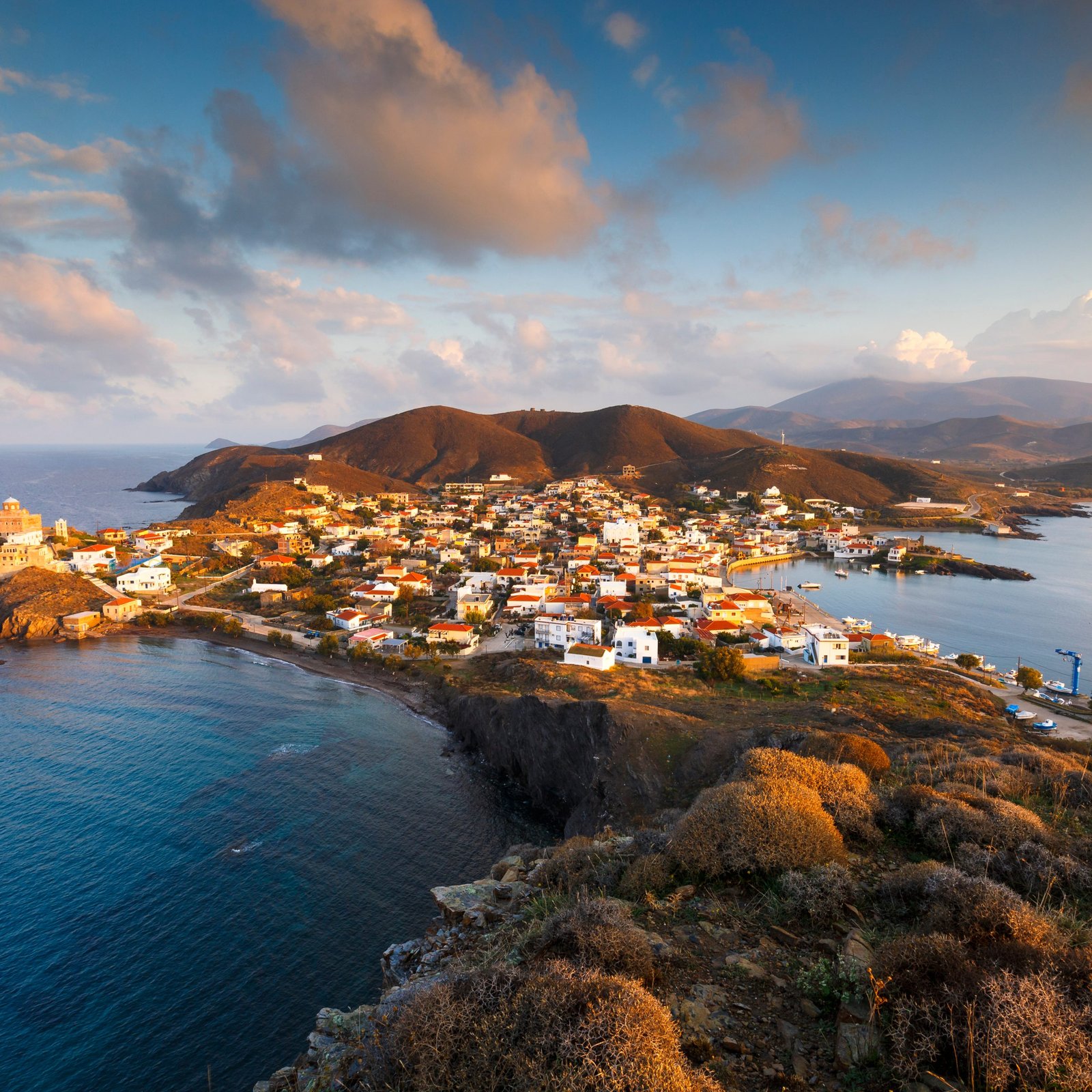Psara Island Greece is a small island in the northeastern Aegean Sea. It lies about 15 kilometers northwest of Chios. Despite its size, Psara holds a strong historical and cultural identity. Today, it welcomes visitors who seek peace, nature, and authentic Greek heritage.
Psara played a major role during the Greek War of Independence. In 1824, the islanders bravely resisted a massive Ottoman attack. Rather than surrender, many chose to die at Palaiokastro, a hilltop fortress that still stands. A monument now honors their sacrifice. Moreover, the island is the birthplace of Konstantinos Kanaris, a national naval hero. His home now operates as a small museum.
The main town of Psara features whitewashed houses and red-tiled roofs. As visitors walk its narrow streets, they see signs of both history and island simplicity. At the highest point, the Church of Agios Nikolaos offers wide sea views and a calm atmosphere. Built in the late 1700s, it uses marble brought by Psarian sailors. Nearby, the Monastery of the Assumption contains rare manuscripts and sacred icons. In earlier times, it even held a painting by El Greco.
Along the coastline, Psara reveals its natural beauty. The island has about 45 kilometers of shoreline and more than 30 beaches. Katsouni Beach, near the port, provides easy access and shallow waters. Lazaretta Beach, further south, offers soft sand and crystal-clear water.
For those who enjoy walking, Psara offers hiking trails with beautiful views. A popular route leads to Palaiokastro and the ruins around it. From there, hikers can see almost the entire island. Furthermore, boat trips from the harbor take travelers to nearby islets like Antipsara, Nisiopoula, and Daskalio. These islets are part of the Natura 2000 network and support local birdlife.
Food also makes Psara special. Local taverns serve fresh seafood, especially lobster. Many consider Psara lobster among the best in Greece. Dishes like lobster pasta, stuffed goat, and squid risotto showcase the island’s flavors. Visitors often eat at places like Resalto, Spitalia, or Aldebaran.
Getting to Psara is easy. Ferries run from Piraeus twice a week. Boats also depart from Chios, especially from Mesta port in the north. Once on the island, travelers walk or drive to reach most places. Rooms for rent and small hotels are available, though early booking is advised in summer.
In conclusion, Psara Island Greece combines history, nature, and local life in a quiet setting. Its brave past, clear beaches, and simple charm make it ideal for travelers who want a genuine Aegean experience.



Comment (0)